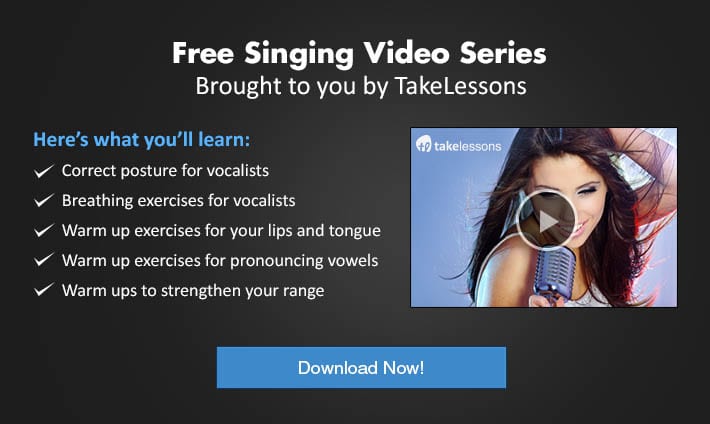Want to learn how to compose a song, but not sure where to start? Here, Saint Augustine, FL teacher Heather L. shares her strategy for teaching the process and making it fun at the same time! Read on to learn more…
Teaching my voice and piano students how to compose a song is a huge part of my curriculum. It is multi-functional, in that it works to hone students’ sightsinging, musicianship, creativity, and theory knowledge in practice. And with most students out of school for the summer, it’s a great time to do something out-of-the-box, like composing!
One of the easiest ways to get even the youngest students to write and then sightread their own music is a simple game. First, on a sheet of staff paper, I draw a five-note scale in a tessitura where the singer’s comfortable. If the student is a pianist, I’ll choose a position where they’re comfortable. I prefer the simplicity of C major for beginners, but I might use an entire scale for more advanced students. Below it or beside it, I draw a series of notes. For instance, for my six-year-old voice student, Ella, I drew a quarter note, then a half note, then a dotted half, then a whole note. Depending on the student’s theory level, I sometimes write the number of beats beside each kind of note.
Now, the fun begins. I’ll ask the student to choose a note from the scale that’s been custom tailored, so to speak, just for his theory level. Then I’ll ask him to choose what kind of note we’ll use. So my voice student, Ella, asks, “May I please have an F and a half note?” I write a half note on F. Ella then asks, “May I please have a G and a dotted half note?” I reply, “No, Ella. It’s in 4/4 time. Only four beats fit into this measure. With a dotted half added to a half, that’d be five beats. That’s too many.” “Okay,” Ella says, “I’ll take a quarter note on C and a quarter note on D.”
Many of the best piano curriculum books feature a few exercises in which you must write a few measures of melody, but this game extends it and makes it accessible either for voice students who don’t have those books or for piano students who may not be quite ready for the exercise of simply coming up with something. Eventually, of course, you will slowly grow to take charge of this game and be able to compose a song more freely and independently. As that time comes along, I’ll begin to allow more freedom with only some constraints.
For instance, if you’re an intermediate student, I would ask you to write your own eight measure piece, but I’ll give you the time signature, the key signature, and perhaps the left hand chord progression. Making it even more fun could mean writing some lyrics first and trying to write the melody to match.
When I was growing up, it was always the running joke that singers were the dumbest of the musicians when it comes to theory and composition. Often, pianists weren’t regarded much more highly. But perhaps, that’s because they were never given the encouragement needed even to try.
 Heather L. teaches singing, piano, acting, and more in Saint Augustine, FL, as well as through online lessons. She is a graduate of the prestigious Westminster Choir College in Princeton, New Jersey, and has performed with the New York and Royal Philharmonics, the New Jersey and Virginia Symphonies, the American Boy Choir, and the internationally renowned opera star, Andrea Bocelli. Learn more about Heather here!
Heather L. teaches singing, piano, acting, and more in Saint Augustine, FL, as well as through online lessons. She is a graduate of the prestigious Westminster Choir College in Princeton, New Jersey, and has performed with the New York and Royal Philharmonics, the New Jersey and Virginia Symphonies, the American Boy Choir, and the internationally renowned opera star, Andrea Bocelli. Learn more about Heather here!
Photo by Tim RT
Suzy S.


